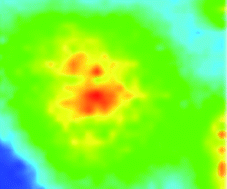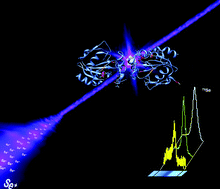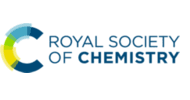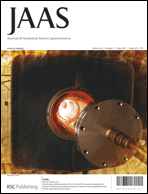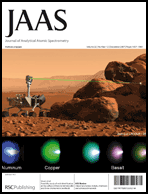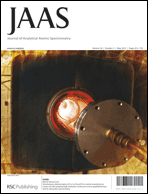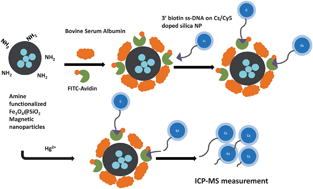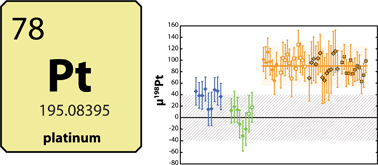We are starting a new section in JAAS News in which we will try to find out the views of the younger generation of atomic spectroscopists. Today, we are publishing an interview with Luca Flamigni, who is currently a PhD student in Detlef Gunther’s group at ETH Zürich (Switzerland).
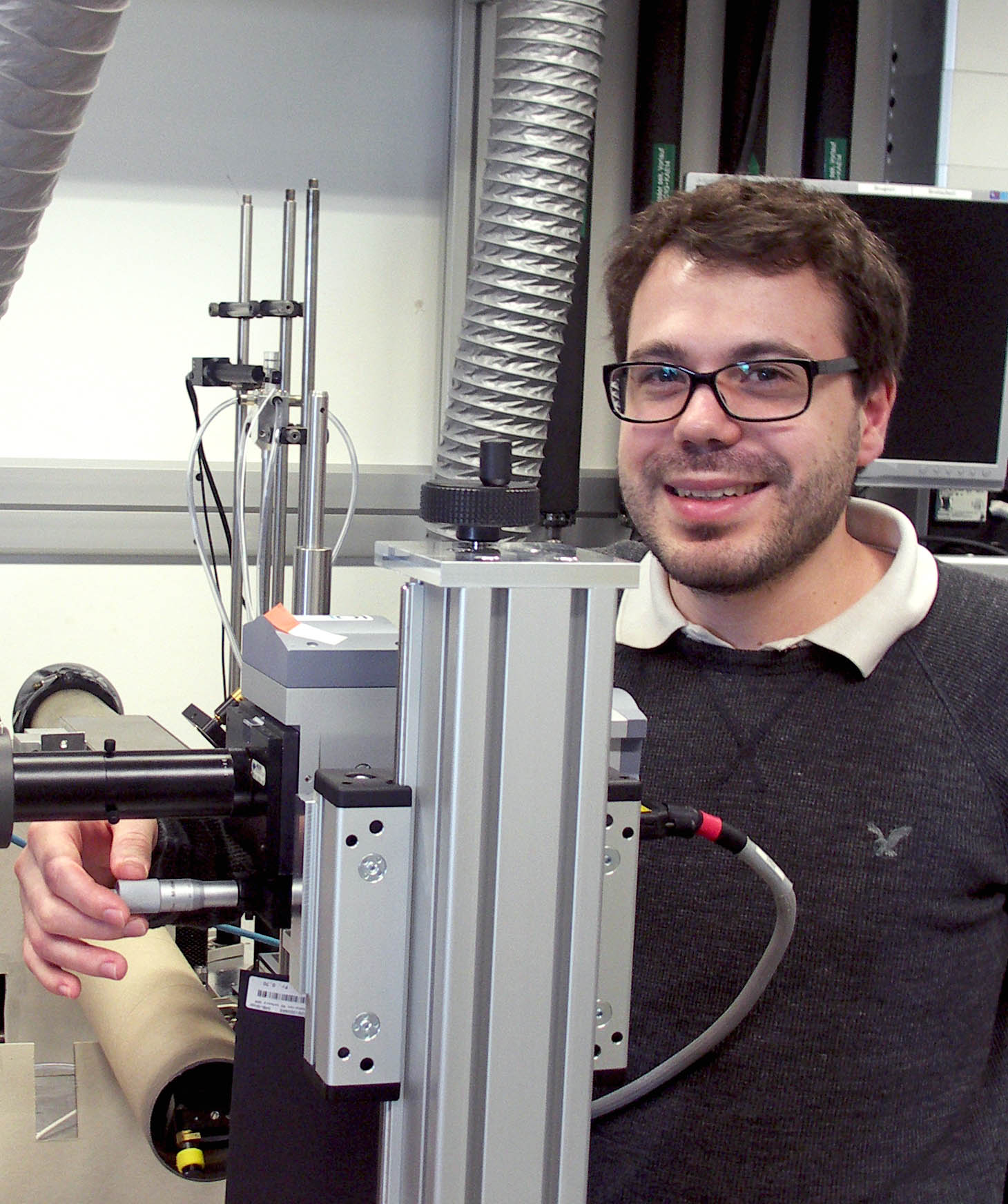
Luca Flamigni in his lab at ETH Zürich
Who or what inspired you to become a scientist?
I have always been interested in technical and scientific aspects of life and nature. I think I inherited this curiosity from my father, who is a biologist and teaches science and mathematics in a secondary school.
Why did you choose your research group/University and what factors influenced your choice?
After my MSc in chemistry at ETH, I decided to pursue a PhD in analytical chemistry. At that point, I had done three projects in analytical chemistry at ETH and I was convinced that mass spectrometry was appealing the most to me. After being accepted as a student by Prof. Günther, I had no more doubts that analytical chemistry was my field of interest and joined his group for micro and trace analysis. ETH has a great infrastructure, is a world-class university, and is not too far from my home town.
Can you explain a bit the purpose of your current research activities?
My work is dedicated to a better understanding of the processes occurring inside the inductively coupled plasma (ICP) for mass spectrometric analysis of laser-produced aerosols. The theoretical considerations and experimental results obtained during my thesis will lead to new quantification strategies and instrumental developments on the ICP side.
How is a typical day in your lab?
I have two different typical days, depending on whether I am doing measurements or working at the computer. When I work in the lab, I usually try to get everything up and running until lunch, which is very early – at around eleven – in our group. Then, in the afternoon, I first run the most important experiments, which are on my schedule. If there is time left, I continue with what I thought of during the first experiments. If I am working in the office, I usually do repetitive, bureaucratic and easier tasks in the morning, when I tend to be less creative, then I do all the programming and interpretation in the afternoon.
What common activities are organized in your research group?
Our group is known for its good social life. For every accepted manuscript, the first author invites all group members for a drink after work. A few times every semester we meet for a barbecue or a drink for special occasions and when we have visitors. Other than that, every two years there is a group retreat, where we gather somewhere for two or three days. Last time we went to a castle close to the Lake Constance in the North-East of Switzerland. It was really a picturesque place to visit.
What app/programs do you typically use?
Everybody here in the lab knows me as an ImageJ enthusiast. ImageJ is a free piece of software used for image processing and microscopy. I do most of my work with it and have a folder full of useful macros to perform many tasks, such as size determination of micro-droplets, evaluation of SEM pictures, particle tracking etc. Beside the typical programs (Microsoft Office, Origin, SigmaPlot, LabVIEW, Adobe Photoshop), I am sometimes programming in Java using the NetBeans IDE and I recently started to experiment with Comsol for the simulation of flow systems.
How do you search for scientific information? How do you manage your bibliography?
I read at least twice a week the “recent articles” pages of JAAS and of the other analytical chemistry journals. When I find something interesting, I add the bibliographic information to Zotero, which is a browser plugin. When I do bibliographic research for a paper, I use SciFinder, which is a very powerful tool provided by the ETH library. I also use Google Scholar, which is helpful to retrieve information from outside the field of analytical chemistry. When I write a paper, I import the bibliography I have in Zotero into EndNote, which integrates well with Microsoft Word.
Which type of articles do you prefer?
We are forced to read broader, but clearly I like the articles on ICP-MS. Many of them are dealing with laser ablation and I find them always very interesting. Recently, I started to pay more attention also to the LIBS articles. LIBS is having a sort of revival, and it is a technique, which is related to LA-ICP-MS, even though sampling and plasma are not separated. This feature is the reason for both its advantages (simplicity, cost) and its disadvantages (quantification capabilities, robustness) in comparison with LA-ICP-MS. I like how both techniques are advancing over time and I think that they both have a lot of potential.
What do you like and dislike the most about your work?
I especially like that I can both spend time in the lab and at the computer. This makes the work much more interesting and less repetitive. I also enjoy the freedom I have in planning and designing the experiments and see myself as lucky, because I can directly access so many tools and services at ETH, from the mechanical workshop to the chemical warehouse. What I do not like so much here in Zurich is the weather, which is quite dark and gray all year long. In addition, this is sometimes reflected on the mood of people, who tend to be gloomy.
What do you expect to be doing in 5 years time?
This is a very tough question. I hope that I will be doing something related to analytical chemistry, or at least science and technology in general. I am very open to new challenges, but I believe that I have learnt a lot about what is achievable nowadays with modern instrumentation and I would like to exploit this knowledge. I actually have a personal interest in forensics and criminology, which I may try to cultivate professionally.
What do you enjoy doing when you are not in the lab?
Contrarily to most Swiss people, I am not a very sporty person. I like to play tennis from time to time and to ski during the winter, but my principal hobbies are actually indoors. I play the piano – mostly jazz and blues – and I enjoy composing music on my computer. I have a digital piano, a synthesizer and I am a proud owner of a keytar, which is a keyboard that one can hold like a guitar. I also like digital photography and electronics, and to relax I like to watch movies and to play computer games.
Thanks a lot for your detailed answers, Luca!
Have a look at the most recents articles authored by Luca below!
Luca Flamigni, Joachim Koch, Helmar Wiltsche, Robert Brogioli, Sabrina Gschwind and Detlef Günther
Sabrina Gschwind, Luca Flamigni, Joachim Koch, Olga Borovinskaya, Sebastian Groh, Kay Niemax and Detlef Günther
DOI: 10.1039/C0JA00249F, Communication
